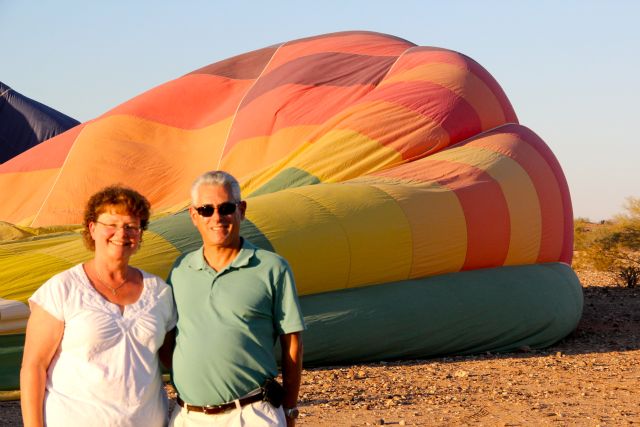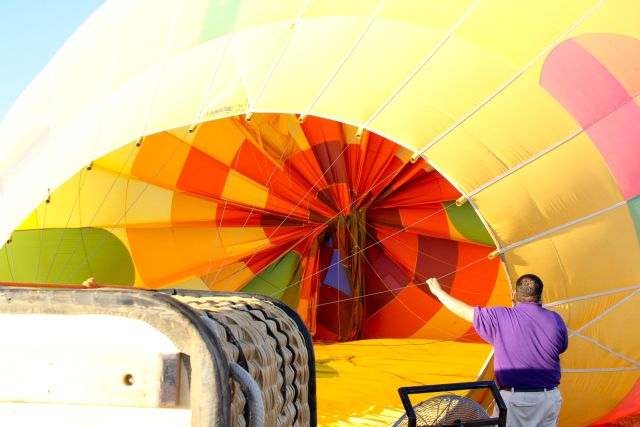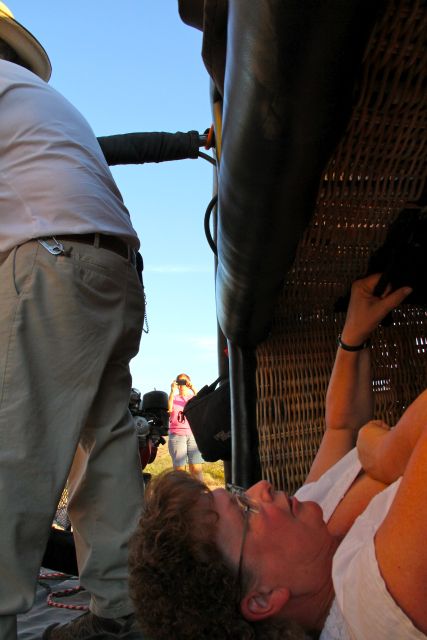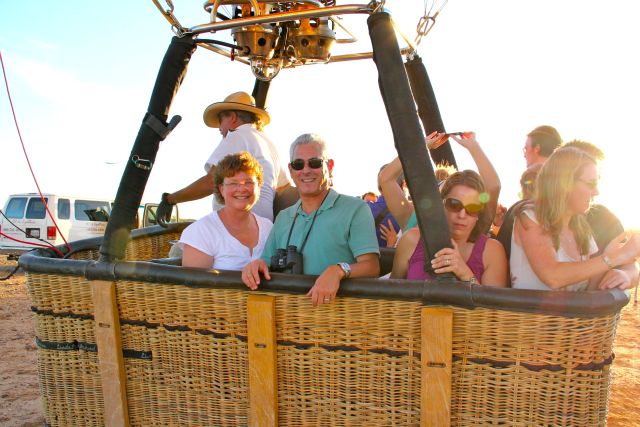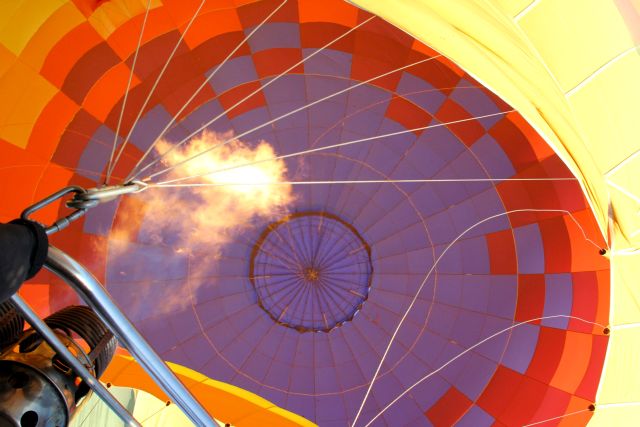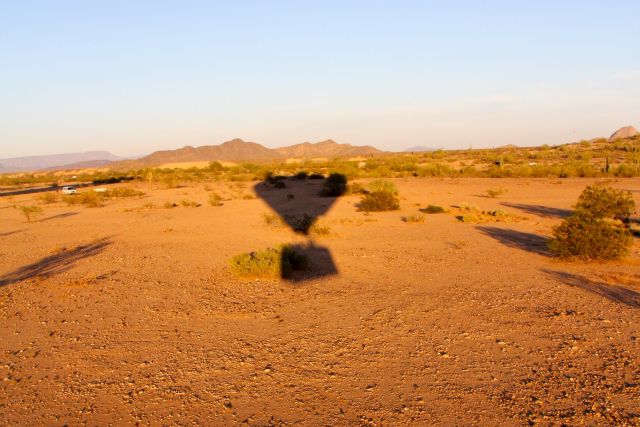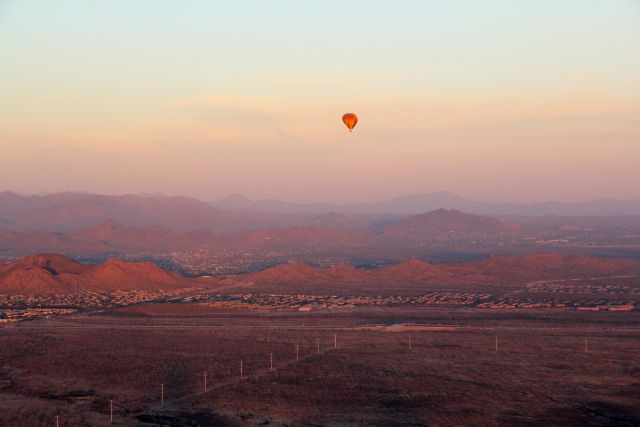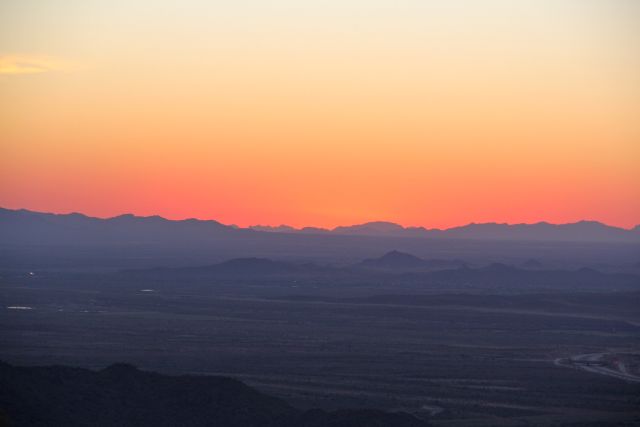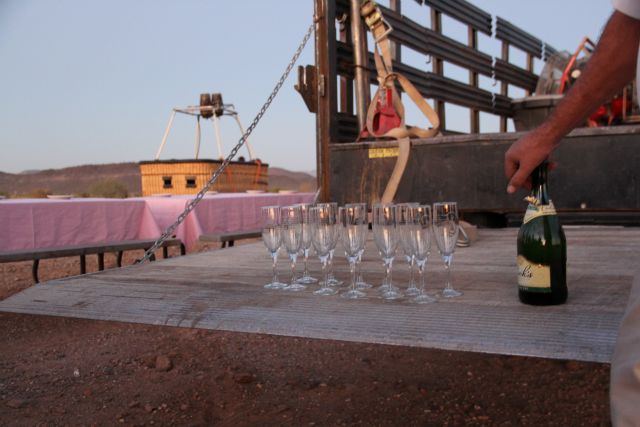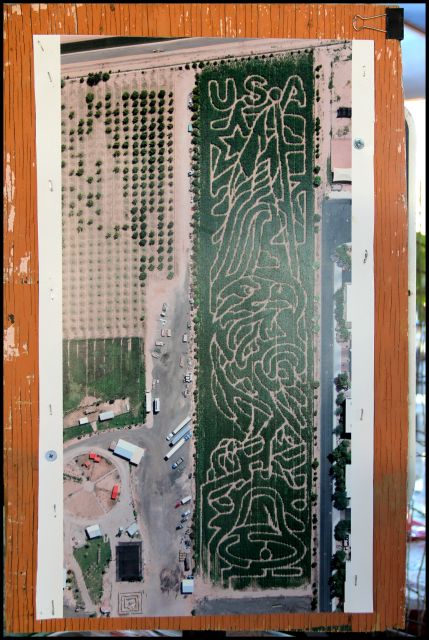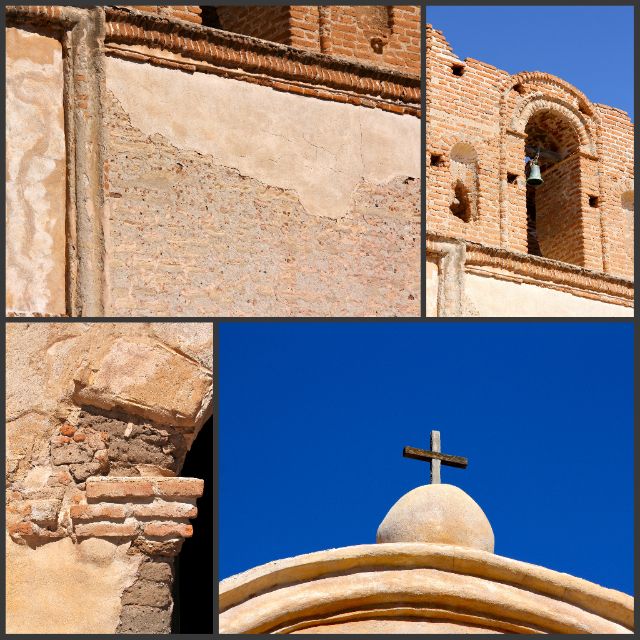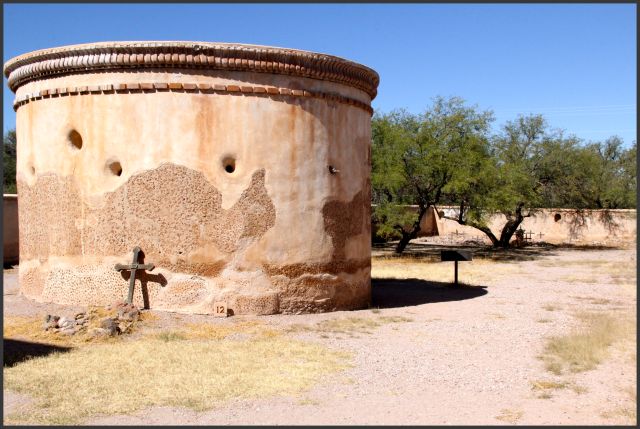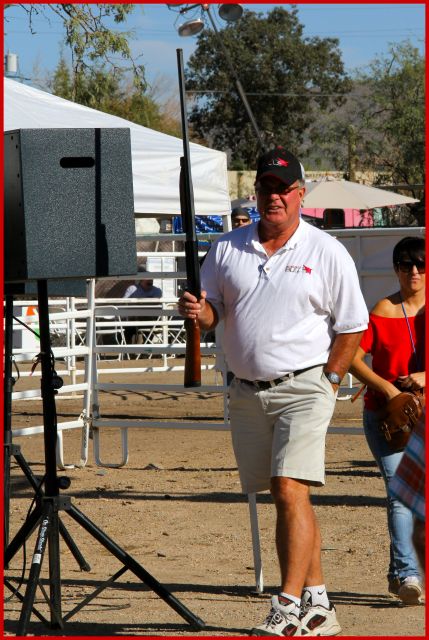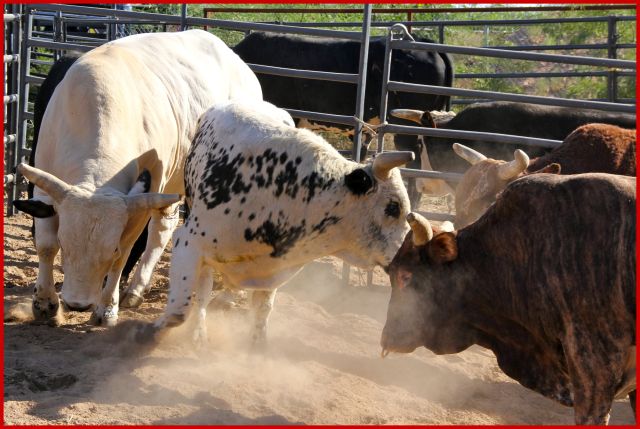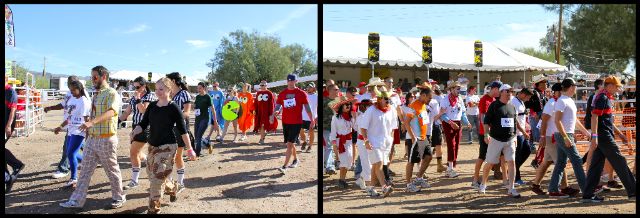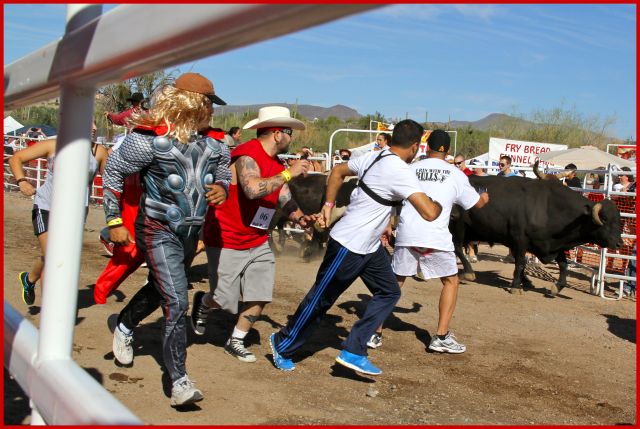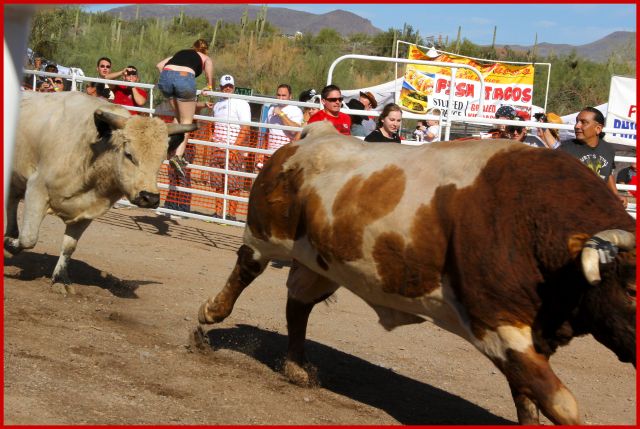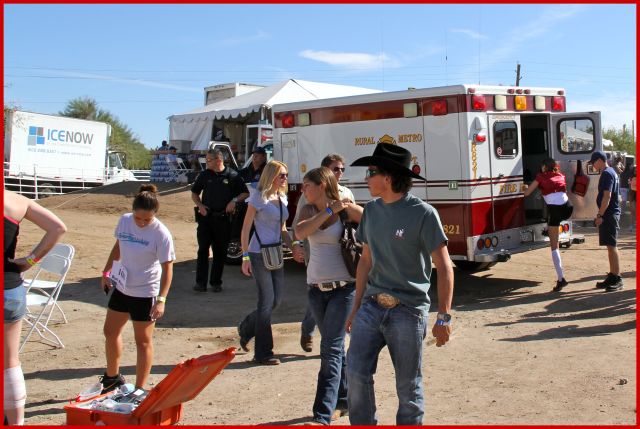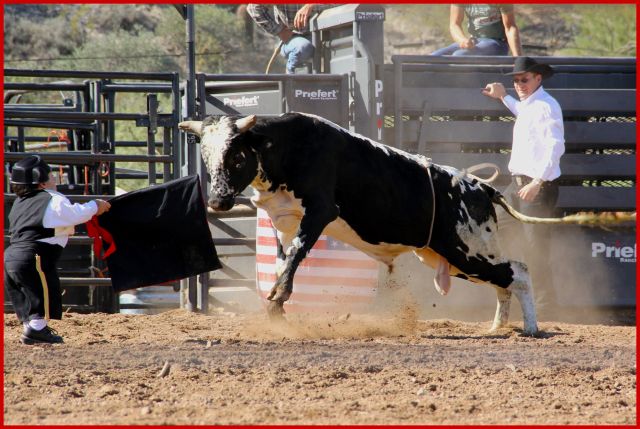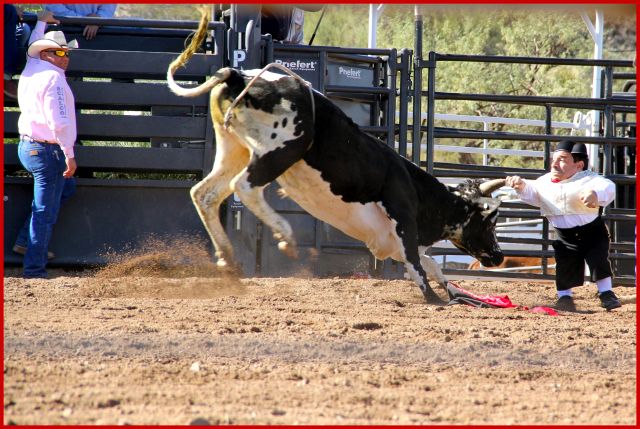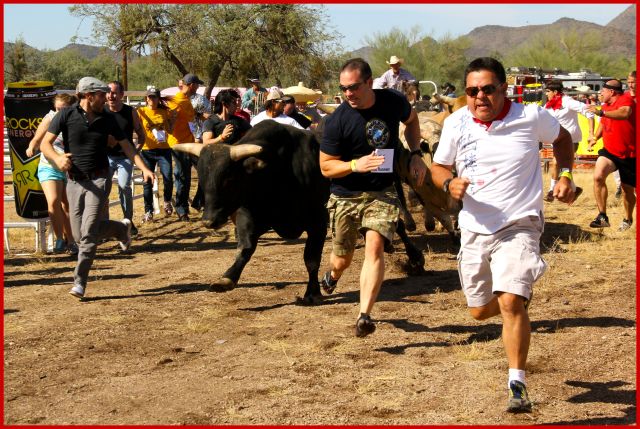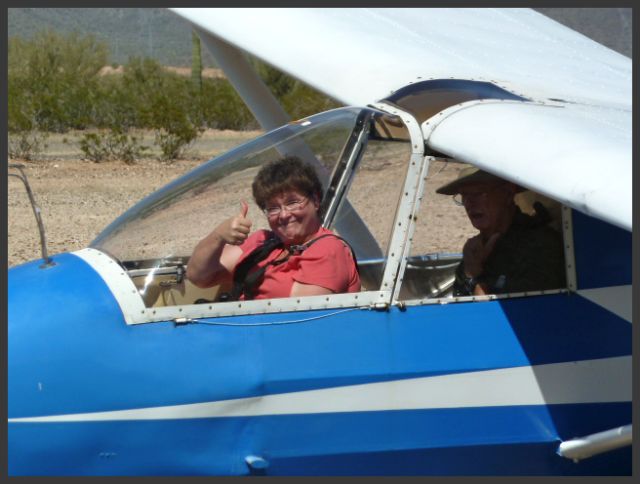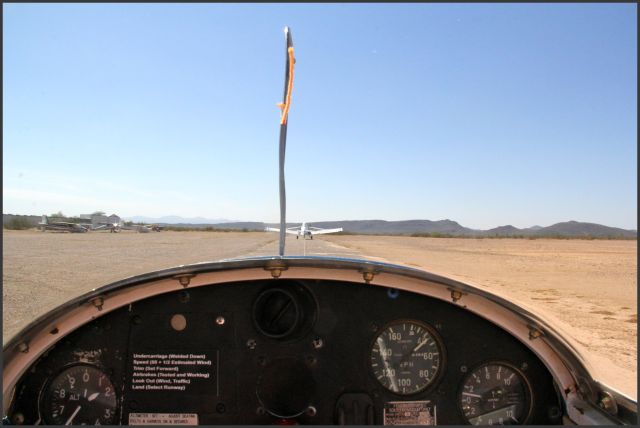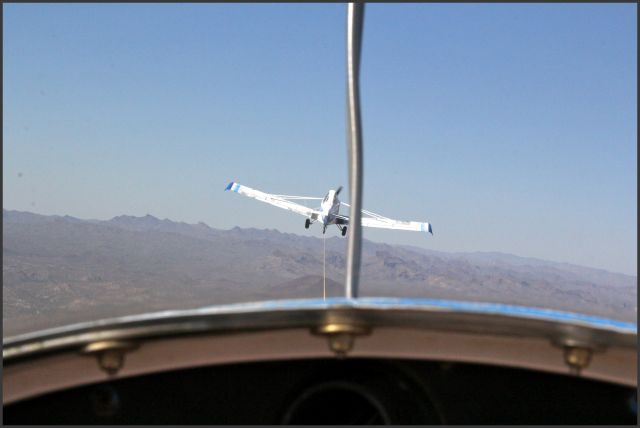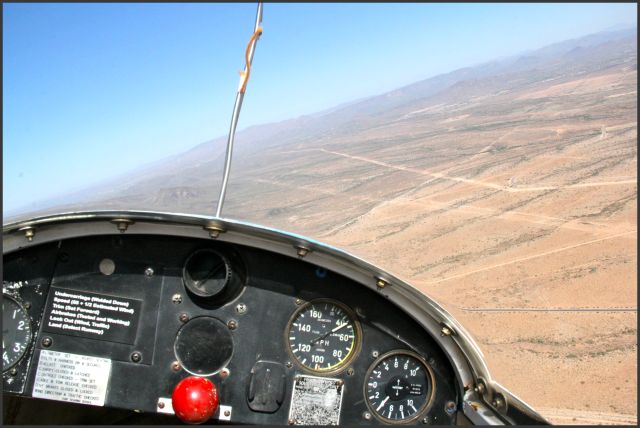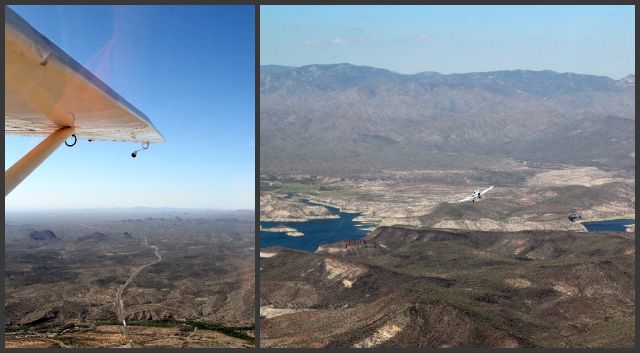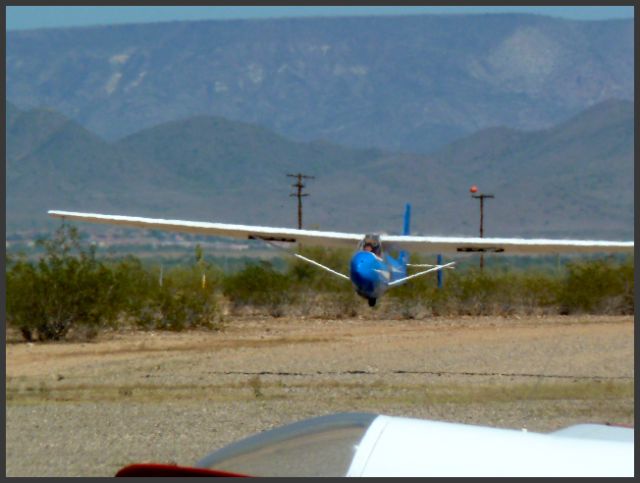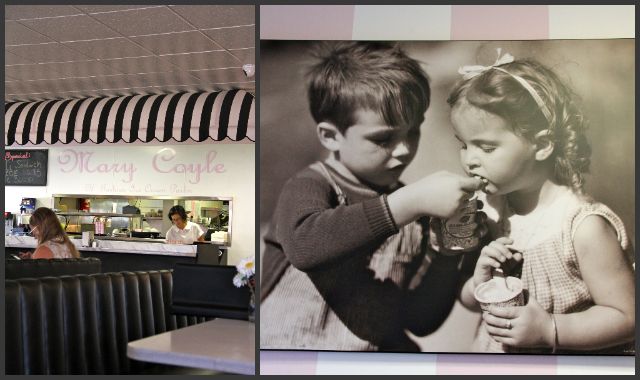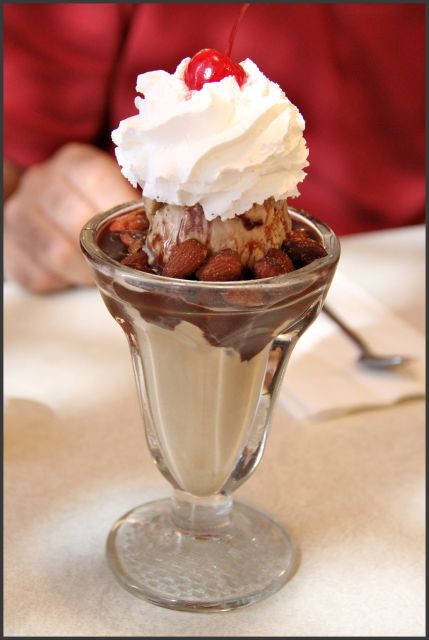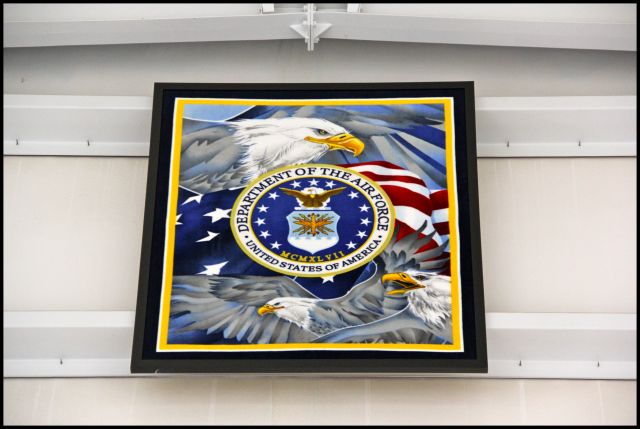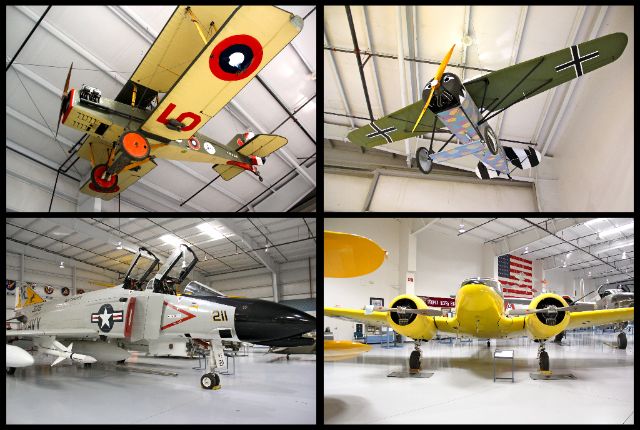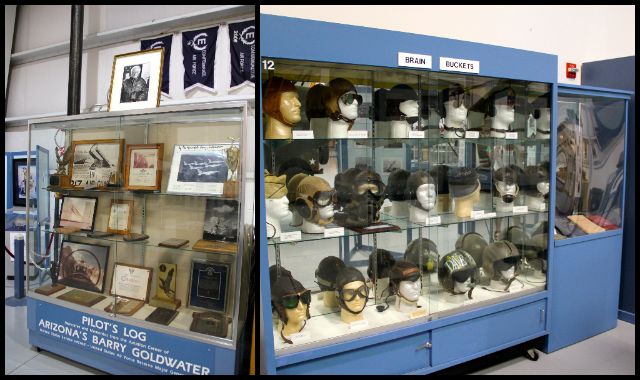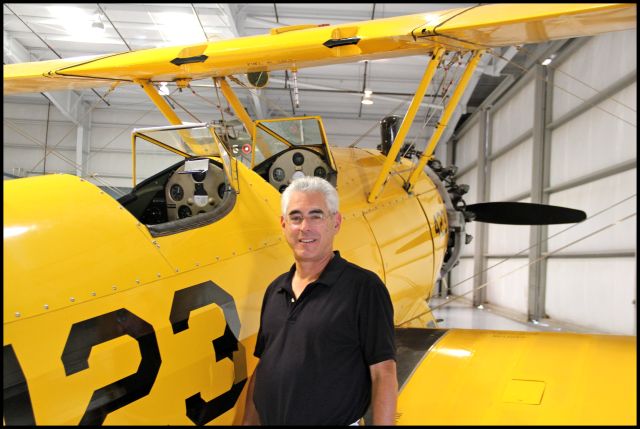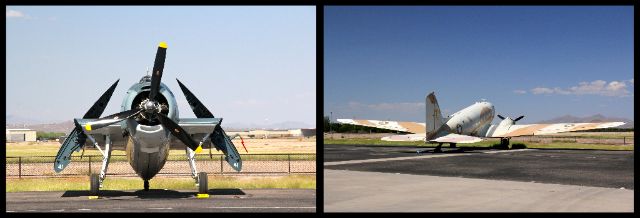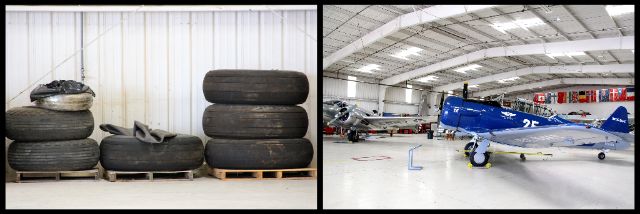We met our group (about 75 people riding in 6 balloons) at the Deer Valley Airport one Sunday afternoon. From there, we piled into vans to drive out to the departure site near Lake Pleasant. We were excited when the crew captain determined that conditions were safe and the launches would proceed. Our crew laid out the balloon, called an envelope, on the ground and did a visual inspection before beginning to inflate it.
Our sweet ride!
One of the things I did while I was waiting was inspect the basket. I have wicker baskets at home and none of them are strong enough to hold 25 pounds let alone 13 adults. I knocked into the basket, punched it, kicked it and still it didn't budge. One of the crew members was watching me and with a twinkle in his eye, said that the baskets are very strong and they've never had an "accident." Meanwhile, the crew continued inflating the balloon.
The interior of the balloon was inspected several times as it inflated. These people take safety very seriously!
The pilot explained that once the balloon was inflated and brought upright, everyone would need to climb inside the basket quickly. There are toe holds in the basket but no step stool. I was glad he asked us and another couple if we would be willing to get in the balloon while it was on its side, laying down with our feet against the bottom of the basket. They need ballast in the basket as they bring it upright.
We had to crawl in and then shift our balance as the basket righted itself.
As soon as the balloon was mostly inflated the crew allowed it to rise as they held on tightly to the ropes. When the basket was upright, the rest of the passengers and the pilot climbed in over the sides. At last, we were ready to launch!
It looks like we're crammed in the basket but there was plenty of room for the 12 passengers and the pilot had his own compartment just behind me.
Once we were all in and situated, the pilot fired up the burner to heat the air in the balloon. We were standing directly beneath the burner and it was quite warm/hot when he fired it up - in fact, it felt like a blistering sunburn. It is the noise from the burner that makes the dogs bark. The pilot explained that they can hear it from miles away.
As the air in the balloon warmed, we rose higher in the sky.
I guess I expected to feel the sensation of moving or at least feel the wind. What I realized as we rose is that we move WITH the wind so there is no sensation of moving or feeling the wind. It felt like we were floating in air.
We watched our shadow as we gained altitude.
Even though the glider ride took us over the same area, the view was different since we were moving much more slowly in the balloon and were at a lower altitude for most of the ride.
Surprisingly, the view straight down did not bother me at all while Richard was not a fan.
About 30 minutes after we launched, the sun started to set. I have seen thousands of sunsets but there is something special about watching one while you're floating 3000 feet above the ground. The 360-degree view allowed us to see the gradations in color in a way we couldn't on the ground.
The northeast valley was washed in rosy hues as the sun neared the horizon.
And the view to the west was quite a show!
Colors changed from orange to rose as the sun slipped lower and lower on the horizon.
After about an hour of flight time, as dusk approached, it was time to land. Although our pilot prepared us for a landing in which the basket tips over, we landed upright and the land crew swiftly secured the lines to keep us down. One by one, we climbed out of the basket, marveling at our ride.
As is tradition, we ended our flight with a champagne toast. Our crew also provided tables with cloth tablecloths and excellent appetizers. We thought it was the ultimate tailgate party! And a fabulous way to end a spectacular ride!
Thumb Up or Down: UP!!!
Miles Round Trip: 77.3 miles
Miles To Date: 10,713.7 miles
Percent of List Completed: 94%
Date of This Trip: November 4, 2012
Date of This Trip: November 4, 2012

